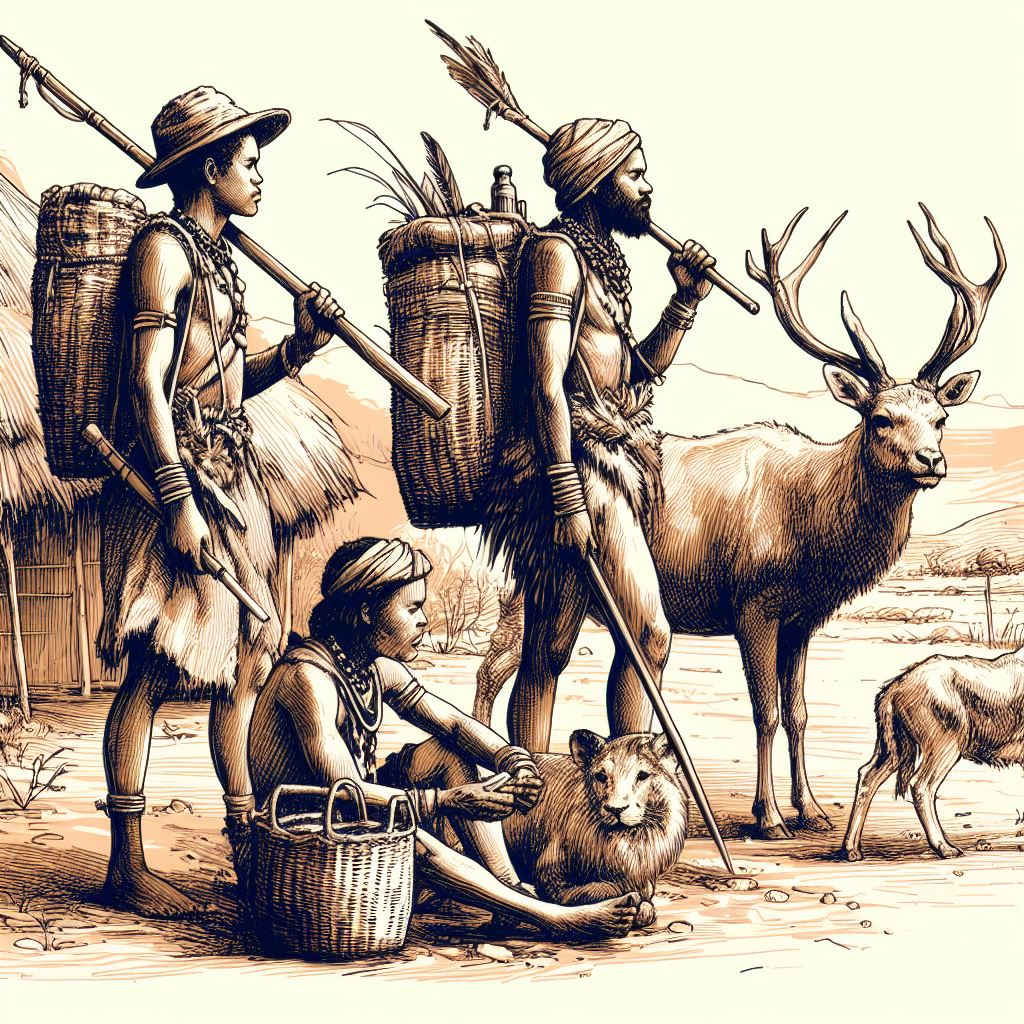Dr. Ashwani Kumar
“Modernism is about trusting in oneself, while marketism is about placing trust in the market.”
Modernization is portrayed as the dominant force of Social Change
Modernization represents a transformative force that is reshaping societies globally. It embodies the unyielding quest for advancement, innovation, and the adaptation to emergent imperatives. This dynamic phenomenon enables nations, communities, and individuals to traverse the complexities of the contemporary era, adopting technological progress, socio-economic transformations, and cultural metamorphosis. In a world characterized by swift transitions, modernization acts as a catalyst for growth, development, and the aspiration towards an enhanced future. By incorporating digital technologies and advocating for sustainable methodologies, modernization alters every aspect of human life, presenting a spectrum of opportunities and challenges as societies endeavor to prosper in the twenty-first century.

Classical sociologists such as Emile Durkheim, Max Weber, and Karl Marx offered diverse perspectives on modernity and modernization. Durkheim highlighted the transition from mechanical solidarity to organic solidarity as societies modernize. He emphasized the importance of social cohesion and the role of institutions in maintaining order amidst increasing complexity. On the other hand, Max Weber explored the rationalization and bureaucratization of modern societies. Weber’s concept of the “iron cage” described the dehumanizing effects of rationalization, suggesting that modernization could lead to a loss of individual freedom and creativity. Karl Marx viewed modernization through the lens of class struggle and economic transformation. In “The Communist Manifesto,” Marx critiqued capitalism as a driving force behind modernization, arguing that it perpetuated inequality and alienation. Despite their differing views, these classical sociologists collectively underscored the profound societal changes accompanying modernization, while struggling with its implications for social order, individual autonomy, and economic structure.
Giddens views modernity as a reflexive process driven by globalization, technology, and the interplay between structure and agency, encapsulating the emergence of a risky society characterized by unprecedented societal transformations and the need for constant adaptation.
Modernity Misinterpreted in India
In his work “Mistaken Modernity,” Dipankar Gupta offers a new perspective on the concept of modernity, challenging the common notion prevalent in India that equates it solely with technological advancement or increased consumption. Instead, Gupta underscores that modernity encompasses far more than material progress; it is intertwined with the attitudes and social dynamics shaping a society. Central to Gupta’s critique is the Indian middle class, which he observes to superficially adopt aspects of modernity while concurrently holding onto traditional values. This dichotomy is particularly evident in various aspects of societal life, including familial relationships, the persistence of caste and social hierarchies, and a selective adherence to legal norms. Gupta coins the term “west-toxicated class” to encapsulate this phenomenon, highlighting how Western ideals influence certain segments of society without fully embracing the transformative aspects of modernity. Through his analysis, Gupta prompts a critical reflection on the complexities of modernization in Indian society, urging for a more holistic understanding that transcends superficial appearances.
“Marketization Taking Precedence Over Modernization in Indian Society”
In the Indian context, modernisation and urbanisation are often conflated with the expansion of market cities. However, it’s crucial to recognize that while modernization involves adopting new technologies and social structures, urbanization specifically pertains to the growth of urban areas and the migration of people from rural to urban settings. We observe in India not merely modernization but a significant shift towards marketization.
Marketization refers to the increasing influence of market forces on various aspects of society, including economic, social, and cultural domains. In the Indian context, this phenomenon is evident in the rapid growth of urban centers driven by market demands. As technology and production systems modernize, they integrate more deeply with market mechanisms, shaping societal structures and norms.
The decision-making process of individuals, both with and without assets in rural areas, reflects this marketization trend. Those with assets may choose to remain in rural areas, but their lifestyles and consumption patterns often align with market-driven aspirations. Conversely, those without assets seek better opportunities in urban areas, where the allure of market-driven livelihoods and amenities is strong.
As individuals transition from rural to urban settings, they become integral parts of the market ecosystem as consumers or producers. This integration reinforces the dominance of market forces in shaping societal dynamics. The emergence of a “market-toxicated” class, primarily in urban areas, underscores the pervasive influence of market ideologies on individual aspirations and lifestyles. A significant portion of the urban population becomes part of what can be termed a “market-toxicated” class, meaning they imagine their lives solely within the confines of market spaces.
This market-toxicated class diversifies the market, creating different market spaces for different socioeconomic classes. The elite class, represented by the business class, emerges as the primary beneficiaries of this market system. The middle class, which manages to secure a place in the market, remains dependent on it, thus comprising a substantial portion of the market-toxicated masses.
Even among the lower classes in contemporary Indian society, there exists a subset who, despite their limited resources, choose to adapt to the norms and values of the market-based society. These individuals manage to sustain themselves with a low quality of life, often scraping by with minimal financial means. However, alongside this group exists a significant portion of the population known as the ‘pennyless class’. These individuals lack the resources necessary for survival in the competitive landscape of market-driven spaces.
In contemporary times, especially, the prevalence of this pennyless class is notable. They are the ones who have failed to secure even the basic financial resources needed for sustenance. Unfortunately, in the current Indian societal framework, there is a dearth of inclusive policies tailored to support individuals in such precarious financial situations.
As a result of their dire economic circumstances, the cognition and regulation of the penniless class are profoundly constrained. Their everyday lives are overshadowed by the constant struggle for survival in a society dominated by market dynamics. This struggle often develops a sense of ‘marketxiety‘ among the economically marginalized class. ‘Marketxiety’ is the stress and fear experienced by individuals associated with how they regulate their lives in the market.
The likelihood of marketxiety being more prevalent among the penniless class has the potential to escalate into what can be termed as “politicsxiety“—a deep-seated mistrust or fear towards the prevailing political system. Dipanker Gupta’s exploration sheds light on how urbanization and masculinity intertwine to promote what he terms “manxiety,” primarily affecting men who become victims of masculinity in the urban centers, but there are chances marketxiety affects both genders.
As these anxieties intensify, individuals may feel increasingly marginalized and disenfranchised within society. This sense of alienation can drive them towards resorting to unlawful activities as a means of survival. However, each unlawful act further exacerbates their fear of being disconnected from mainstream society.
In a market-based society, where the penniless class is already on the fringes of mainstream social structures, the temptation to engage in unlawful activities as a means of survival becomes even more pronounced. The lack of viable alternatives and the constant struggle for basic necessities can push individuals towards desperate measures, perpetuating a vicious cycle of marginalization and criminality.
The introduction of modern forces in India has been profoundly shaped by market influences, leading to a widespread misconception of modernity as synonymous with consumption. This misinterpretation has fueled the rapid expansion of marketization across various sectors of Indian society. Consequently, the pursuit of modernization has become entangled with the proliferation of market forces, resulting in a landscape where economic imperatives often overshadow broader societal goals.
Furthermore, in Indian society, people are experiencing marketization in the name of modernization. Notably, the Indian market not only promotes modern scientific values and materials but also actively promotes traditional values. This dual promotion creates a complex cultural landscape where traditional and modern values intertwine within the framework of market dynamics.
The views and opinions expressed by the authors in this article are their personal opinions and do not represent the views of PureSociology. You can contact the author/s at [email protected]. The details of the author/s are:
Dr. Ashwani Kumar is currently an Assistant professor in Sociology at Gurukashi University.



The Beauty of the narration lies in its equilibrium between the Novelty and the academic requirements of scholastic references.
I.e; You ideas have a strong root in scholarly sociological bases.
Dr. Ashwani’s exploration of the “penniless class” and “marketxiety” poignantly highlights the stark inequalities and social anxieties driven by market dynamics. His analysis underscores the urgent need for inclusive policies to support marginalized populations. This insightful work significantly contributes to the discourse on modernization and marketization.
Good write-up, I’m regular visitor of one’s blog, maintain up the excellent operate, and It is going to be a regular visitor for a lengthy time.